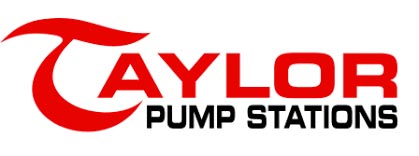See you at the Station – Keep it Simple Waste Water Lift Station
“Keep it simple, Sir”, when designing a Packaged Waste Water Lift Station.
No disrespect here as the acronym “KISS” is well known to stand for “Keep it simple stupid”. Sir, is much more appropriate as we are dealing with professional engineers and public works officials who undertake a difficult task when specifying a packaged waste water lift station. As experienced packaged waste water lift station builders, designing an easy to operate waste water lift station is beneficial to both the end user, and the maintenance workers charged with overseeing the stations daily operations.
Packaged waste water lift stations need not be complicated in their design. Specifications are DEQ (Department of Environmental Quality) originated in most cases and because the regulations governing waste water lift stations are generally standardized, with some variance, making it easy for an experienced builder to follow and construct. The licensed engineer will work with the packaged builder of the waste water lift station from the concept to test run-up.
This scenario can be reversed if the builder of the waste water station is the generator of the order, either way it is close working relationship. The municipal waste water station is always a custom station but that has more to do with add on equipment and mostly as it applies to electric equipment. An easy to operate waste water lift station may function fine without Variable Frequency Devices (VFD), noting if they are low horsepower pump motors and flows are fairly constant, the basic across the line start, adequate capacity non clog pumps would be appropriate.
Remember in the laws of physics you do not get something for nothing. The VFD has an initial capital cost that must be considered and there is additional cost in energy use (slight as it is) that the VFD requires at BEP or higher flows. This can actually increase energy costs over time.
A waste water lift station is comprised of four basic components.
- The Pre- Cast Concrete section is where we find the concrete structure consisting of the standard 6’ diameter barrel sections, occasionally lined with High Density Polythylene (HDPE) , and commonly in depths of 20’.
- The base of the station is also concrete and historically sloped where the sides have a fillet design to keep sludge from settling at the outer circle. This design is changing as of recent to an easier to clean design to save on fuel and labor cost as well as the regulatory costs in conforming to OSHA.
- Discharge piping and valves are usually housed in a concrete vault and included in the scope of supply “Precast Concrete” The mechanical equipment includes the pump and motors,in a duplex configuration with the pump of choice being of a submersible design. Valves and discharge piping, with pressure gauges to withstand the demands of waste water are and specified in the mechanical package.
- All submersible pumps need a retrieval system and we include all stainless steel guide rails in the metals section. Hatches and lids, made of stainless steel but sometimes aluminum and are included under specialty metals.
All of these components are complimented by the electrical components. The controls of increasing proficiency are integrated in the manner that they are matched to the motors and in most cases made by the VFD manufacturer when drives are specified. All things done repetitively will usually get easier! General Contractors often comment to me of the need for a “Packaged waste water lift stations”. I always compliment their knowledge but state I believe there is advantage to having a station built by a supplier who is working with the components daily whether shipping a complete station or assisting with a retrofit of a jockey pump in an existing waste water lift station. When you live and yes sometimes (have to breathe) waste water lift stations you design in simple, but well planned and of superior quality components. SEE YOU NEXT WEEK AT THE PUMP STATION


